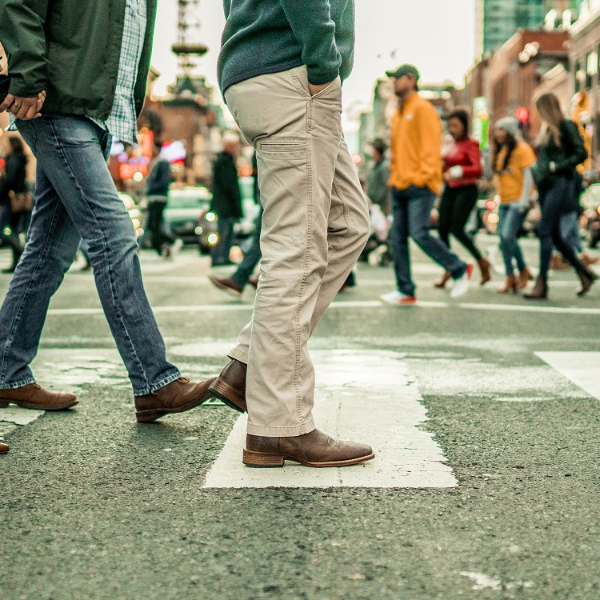The pedestrian deserves to be seen

The pedestrian deserves to be seen
Since the start of 2021, the Municipality of Rotterdam has been using the Pedestrian Traffic Monitor. What began as a relatively modest project has developed into an efficient tool that brings the pedestrian into the picture. Laurens Versluis works as an urban data scientist at Witteveen+Bos. He is the face behind the Pedestrian Traffic Monitor.
Congratulations on the award at the CVS congress. What is the award all about?
Laurens: ‘The CVS, a colloquium for transport planning research, is a meeting place for researchers, policy makers and other specialists in the fields of mobility and traffic. Our paper on the Pedestrian Traffic Monitor was among the prize winners. In it, we outlined the need for more insight into pedestrian activity and explained how the monitor generates this insight using intelligent data connections and data analysis. The jury was enthusiastic about this innovative and relevant subject. We’re very pleased with this award!’ Laurens wrote the paper together with Tessa Leferink (Witteveen+Bos) and André de Wit (Municipality of Rotterdam).
Want to know more? Download the paper here.

What plans are there for the further development of the LoopMonitor?
‘We’re currently working on four new developments for the Pedestrian Traffic Monitor. Firstly, we want to better embed the Pedestrian Traffic Monitor at the Municipality. That sounds a bit abstract, but it means that we want to use workshops to get various municipal departments involved in the Pedestrian Traffic Monitor. Pedestrians can mean different things to different departments. The urban management department, for example, is currently working on their gritting policy. Pedestrians are often forgotten in this discussion because there are so many footpaths. But it’s very relevant for policy makers to know which footpaths are the busiest, because then they only need to grit those ones.’
‘Secondly, we want to improve the counting strategy. The Pedestrian Traffic Monitor has shown that more insights are possible, but in gaining them you’re reliant on count data, and that in turn depends on the counting strategy. We’re advising the municipality on how to systematically collect information on pedestrians in order to get an even more accurate picture of their activity.’
‘Thirdly, we want to expand the Pedestrian Traffic Monitor's use geographically, from the city centre to other neighbourhoods. The challenge here is that other locations also have other pedestrian patterns. Finally, we also want to use the Pedestrian Traffic Monitor in other municipalities to get a better picture of those pedestrians, too.’
‘Pedestrians are diverse, have no negative impact on carbon emissions and take up hardly any public space. This makes them invisible in current policies. The Pedestrian Traffic Monitor is a vehicle for integrating pedestrians into policy and design decisions, using accurate data. We’re putting pedestrians on the map – not only the infrastructure, but also the behaviour of the pedestrians themselves.’
More information?
Wim advises on integrated mobility solutions. The Pedestrian Traffic Monitor helps to map the quality of pedestrian networks.



